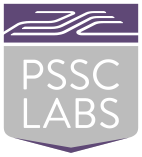Artificial intelligence / AI continues to change the way many organizations conduct their work and research. Deep learning applications are constantly evolving and organizations are adapting to new technologies, improving their performance and capabilities. Companies that fail to adapt to these emerging technologies run the risk of falling behind the competition. At PSSC Labs we want to make sure that doesn’t happen to you. There is a lot going on in the world of artificial intelligence and even more to think about when building a GPU-heavy AI server or cluster system.
Five Essential Elements to an AI/GPU Computing Environment:
AI Applications
The types of artificial intelligence applications you plan to run will play a significant role in determining how you build out your system. Deep learning is arguably one of the most exciting tools to be brought into the life sciences and engineering fields in recent years. Considering which applications you need can help your vendor build out the perfect artificial intelligence system for your organization. Our software engineers can help you through this critical step and the unique needs for your organization.
Machine learning (ML) has evolved quite significantly over the past decade, and even more so in the last few years. Machine learning applications, more specifically deep learning applications which fall under the ML umbrella, can help organizations solve a wide range of problems, from science to engineering. This is done through the application of trained deep networks, something that’s only become possible through advancements in GPU parallel computation, better algorithms, and a few other significant advancements. As deep learning plays an increasingly important role in our world’s organizations, it will become more and more important day over day to consider how these technological advancements will change the field of our work.
GPU Needs and Capabilities
When it comes to the right GPU selection, there are often so many choices to consider it can be difficult to know which direction is best. Among the most impressive GPU options is the NVIDIA A100, an all-around powerhouse when it comes to speed and performance. Designed specifically for scientific computing, graphics, and data analytics in data centers, the A100 GPU is “one of the best data center GPU ever made,” according to NVIDIA CEO Jensen Huang.
With the NVIDIA A100, the right amount of computing power, memory, and scalability is delivered to help organizations tackle their massive workloads. It has more than 54 billion transistors and is the world’s largest 7nm processor. The A100 can also efficiently scale to thousands of GPUs or, with NVIDIA Multi-Instance GPU (MIG) technology, be partitioned into seven GPU instances to accelerate workloads of all sizes. Read up on other GPUs to consider.
HPC Cluster vs. Single Server
Consider whether you’ll need a single AI server or a HPC Cluster. This determination will often come down to budget constraints and the amount of data you plan to ingest, store, analyze, and process. AI/HPC server platforms offer a simple way for you take control of your AI computing projects with maximum performance at the lowest cost of ownership, so a cluster is not always necessary. But just like the individual AI server, our clusters come application-optimized with popular industry applications like OpenFOAM, Ansys Fluent, Comsol Multiphysics, Matlab, and WRF
AI Infrastructure Needs
When it comes to GPU-heavy systems, our primary focus as it pertains to infrastructure is typically around power and cooling. AI servers are drawing significantly more power than previous generation servers, with some of the higher-end platforms maxing out at 6000 watts. Ensuring that your facility can provide adequate power is essential in determining the size and breadth of your system.
Your facility also needs an HVAC unit that can properly exact the heat created from these systems from the storage area. When it comes to AI system deployments, a lack of consideration on how to properly pose and cool the system can create a situation where you buy an expensive system only to learn that you can’t actually properly run it where you planned to. With a true vendor partner, this is avoided as conversations concerning these potential constraints happen upfront.
Budget Constraints
Most organizations looking for an AI server will evaluate both on-premise and HPC cloud providers to do the job. The problem with cloud providers is that too often the cost you see when first deploying is not the cost you get. While on-premise systems provide stable, predictable costs overtime, cloud computing often results in 3-4x the original deployment cost within 4 years. Budget constraints can be difficult for some vendors to work with, but with a partner that works with you from day one to build a fully customized system, it’s easier to get the right equipment for less.
With years of experience providing artificial intelligence servers and clusters to organizations of all kinds, our engineers here at PSSC Labs listen to the specific needs of our clients and then work with them to customize a solution, within any time and budgetary constraints. Our AI/HPC PowerServe Uniti Servers and our PowerWulf ZXR1+ HPC Cluster are the two products that many of our customers end up purchasing, and for good reason – it’s application-optimized, scalable, and delivered production-ready.
All in all, there are several things to consider when selecting or building a custom AI system. That’s why it’s even more important to work with the right partner – one that can listen to your unique business needs and help you build a system that will perform exactly as you need it to, without the sky-high costs of Tier 1 manufacturers.
To learn more about the important considerations of your AI system or to request a quote for the PowerWulf ZXR1+ HPC Cluster, or any of our other systems, click here.

